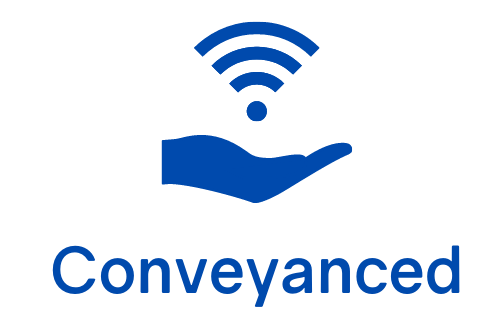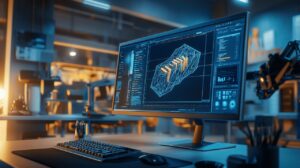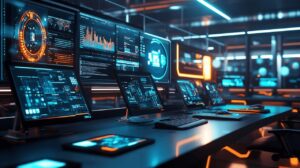The digital art landscape has been revolutionised by artificial intelligence in recent years, with text-to-image generation becoming increasingly sophisticated and accessible. As AI continues to evolve, new tools are emerging that build upon the conversational capabilities pioneered by large language models. These innovations are changing how we approach visual creation in both personal and professional contexts.
The evolution of ai image generation
From early algorithms to modern solutions
Artificial intelligence has made remarkable strides in visual generation capabilities. What began as experimental algorithms has blossomed into powerful creative tools accessible to millions. AI image generators analyse vast amounts of images using deep learning techniques to create original content that previously required extensive human expertise. The Chat GPT Image generation technology represents a significant milestone in this evolution, demonstrating how conversational AI can extend beyond text to create compelling visuals. From 2022 to 2023 alone, over 15 billion images were generated using text-to-image algorithms, highlighting the explosive growth in this field.
How chat gpt has influenced visual ai development
The success of conversational models like Chat GPT has fundamentally influenced how visual AI tools are designed and interact with users. Modern image generators now employ similar autoregressive models, enabling more natural conversations about visual creation. GPT-4o, for instance, represents a significant advancement with improved text accuracy and photorealism compared to earlier models like DALL-E. This evolution allows users to refine images through natural dialogue while maintaining visual consistency throughout iterations. The integration of DALL-E 3 with ChatGPT demonstrates this convergence, allowing users to provide written descriptions and receive generated images that can be iteratively refined through conversation.
Top ai image creation tools in 2023
Comparing features and capabilities
The market for AI image generation has expanded rapidly, with several standout platforms offering distinctive capabilities. DALL-E 3 has established itself as a leader in photorealistic image creation with remarkable text comprehension. Midjourney has cultivated an impressive user base with over 16 million users and 40 million monthly active users, known for its artistic styling and detail work. Stable Diffusion offers open-source flexibility that appeals to developers and technical users. Nation AI (formerly My Image GPT) specialises in creating images, logos, and photos with continuously evolving style capabilities. Each platform demonstrates unique strengths in areas like photorealism, artistic interpretation, or specialised applications such as logo generation.
Accessibility and user experience considerations
The accessibility of these tools varies significantly across platforms. Some offer free tiers with limited capabilities while others require subscriptions for full access. User experience design plays a crucial role in adoption, with platforms increasingly focusing on conversational interfaces similar to ChatGPT. This approach allows users without technical expertise to create sophisticated visuals through natural language descriptions. Rate limits represent a practical constraint across platforms, with waiting times ranging from 2 to 20 minutes during peak usage, reflecting the substantial computing resources required for image generation. These limitations highlight the balance between accessibility and the resource-intensive nature of AI image creation.
Creative applications and use cases
Digital art and design possibilities
The creative applications for AI image generation span numerous fields and use cases. Graphic designers are incorporating these tools into their workflows for concept exploration and inspiration. Branding projects benefit from rapid logo iteration and design customisation without the traditional time investment. Motion graphics creators use generated images as foundations for animation and video content. The technology enables artists to visualise concepts quickly before committing to more time-intensive production methods. Educational materials have also seen significant improvements through AI visualisation, with tools like GPT-4V helping to create engaging instructional content that previously required specialised design skills.
Business and marketing implementation
Businesses have discovered substantial value in AI image generation across various departments. Marketing teams use these tools for advertising concept development, with companies like BMW, Nutella, Tommy Hilfiger, UnderArmour, and Edelman already incorporating AI-generated visuals into their campaigns. Product teams leverage the technology for ideation and visualization before physical prototyping. E-commerce operations benefit from cost-effective product imagery, with Vue AI claiming to reduce photoshoot costs by up to 75%. This efficiency translates to significant savings in both time and budget, allowing companies to scale creative production while maintaining quality. The technology also enables rapid generation of thumbnails and promotional materials that would otherwise require extensive design resources.
Ethical considerations and future developments
Addressing copyright and ownership questions
As AI image generation becomes mainstream, ethical questions about ownership and attribution have moved to the forefront of industry discussions. The line between inspiration and copyright infringement remains blurry when AI systems train on vast datasets of existing artwork. The risk of deepfakes and misrepresentation presents serious ethical challenges that platforms must address through responsible policies and technological safeguards. While AI offers remarkable efficiency, many argue that human artists bring emotional depth and unique perspective that algorithms cannot replicate. This tension between automation and artistic authenticity continues to shape discussions about fair compensation and recognition in creative fields.
The next frontier in ai-generated visuals
Looking ahead, the trajectory of AI image generation points toward even greater sophistication and integration with existing creative workflows. Future developments will likely include improved quality with better understanding of spatial relationships and physical constraints. We can expect tighter integration with design tools and creative suites, allowing seamless incorporation into professional workflows. Environmental considerations will also shape development, as the significant resource consumption and carbon footprint of these technologies becomes more widely understood. Current image generation relies on energy-intensive GPUs, consuming substantial electricity and water resources. As awareness of these impacts grows, we may see more focus on efficient algorithms and sustainable computing practices to reduce the environmental impact of creative AI.
Cost-effectiveness and resource management
The rise of AI image generation tools like DALL-E 3, Midjourney, and Stable Diffusion has revolutionised how businesses approach visual content creation. With over 15 billion images generated using text-to-image algorithms between 2022 and 2023, these tools have become essential for companies looking to enhance their creative output whilst managing costs. Nation AI (formerly My Image GPT) exemplifies this trend, offering businesses the ability to create unique images, logos and photos through AI-powered generation.
Balancing Quality and Budget in AI Image Production
AI image generators present substantial financial benefits for businesses across sectors. Vue AI claims to reduce photoshoot costs by up to 75%, a figure that highlights the dramatic cost savings possible through AI adoption. Major brands including BMW, Nutella, and Tommy Hilfiger have integrated these tools into their creative processes, allowing them to scale production without proportionally increasing budgets. The cost-effectiveness stems from AI's ability to generate numerous iterations quickly, eliminating expenses associated with traditional photography and graphic design processes. For logo generation specifically, AI tools analyse company names, business sectors and design preferences to create customised branding assets at a fraction of conventional costs, whilst maintaining the originality and uniqueness that businesses require.
Optimising workflows with ai image tools
Beyond direct cost savings, AI image generation tools offer significant workflow optimisations. GPT-4o, with its advanced autoregression model, allows for natural conversation to refine images whilst maintaining consistency throughout iterations—streamlining the revision process that traditionally consumes substantial designer time. The technology enables businesses to be more competitive through rapid ideation and prototyping, particularly valuable for advertising, product ideation, and thumbnail creation. Midjourney's massive user base—over 16 million users with 40 million monthly active users—speaks to the workflow advantages these tools provide. Despite these benefits, organisations must consider the resource constraints of AI image generation, including rate limits ranging from 2 to 20 minutes during peak usage, reflecting the substantial computing power required. As these tools continue to evolve with better integration capabilities and improved understanding of user needs, businesses can expect even greater efficiency gains whilst balancing quality requirements against available resources.



